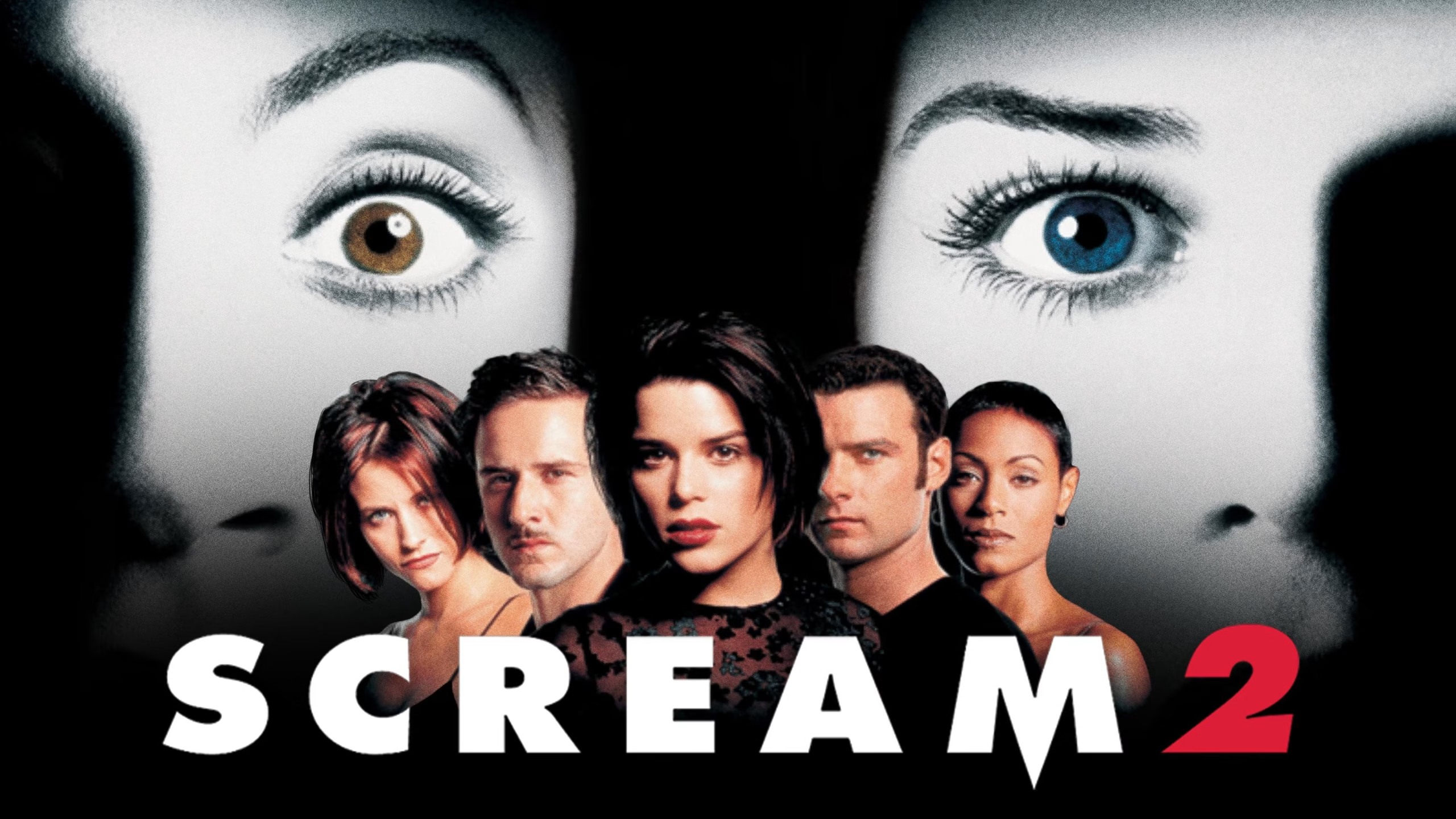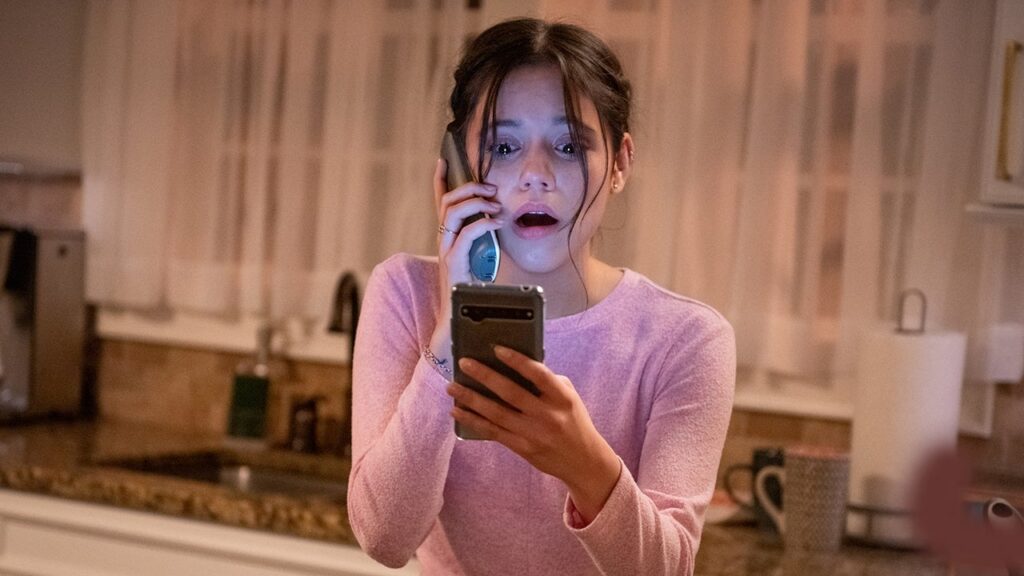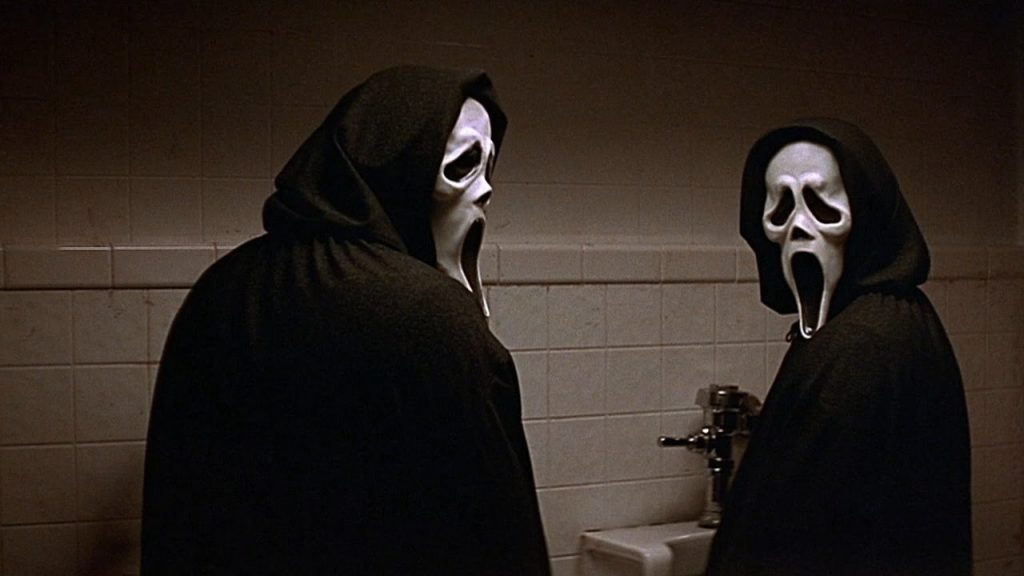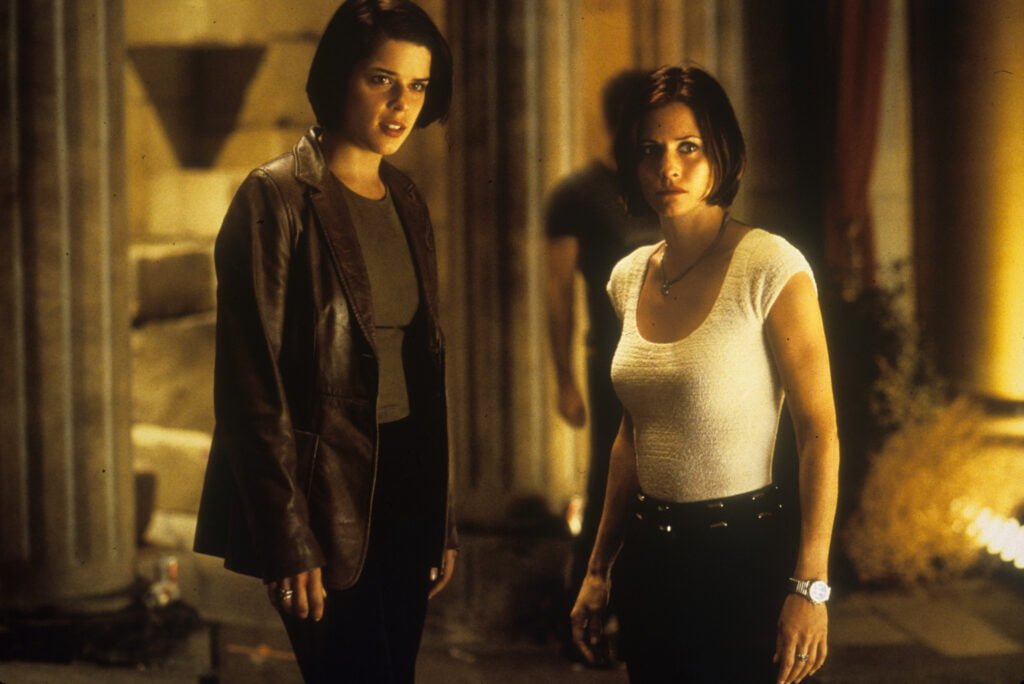Editorials
‘Ganja & Hess’ Blaxsploitation, sexuality, and women’s empowerment in the Black community

Ganja & Hess is a 1973 Blaxploitation horror film with an indelible legacy in Black American cinema. The film was one of the more cerebral Blaxploitation films to debut during that time, and its distribution history only adds to its cult status and mystique. The plot meanders around themes of race, addiction, religion, and female empowerment, with African vampire lore serving as the backdrop. This beautiful indie film has become a cult classic among Black film lovers, and the film’s experimental nature is bolstered by brilliant performances from Marlene Clark and Duane Jones.
William Gunn’s Vision: Redefining Black Cinema
Writer and director William Gunn was also a novelist and playwright, which makes Ganja & Hess a vampire film unlike any other. At times the film does feel more like a stage play than your typical horror film. The themes presented in Ganja & Hess are well-trodden territory, especially in the Blaxploitation genre. But most Blaxploitation films were financed by and honestly made for white audiences as a way to confirm biases about Black culture.
Challenging Stereotypes in Blaxploitation Films
While Black people enjoyed seeing themselves on screen, Black filmmakers of that era lamented how Blaxploitation films created more Black stereotypes and caricatures. Gunn attempted—and ultimately succeeded—to create a Black film devoid of harmful Black stereotypes. Gunn wanted to bring more nuance to Black characters and show the richness and complexity of Black life, which is why there is so much opulence and decadence in Ganja & Hess. Gunn’s departure from Black caricatures is also evident in Hess (Duane Jones), who is the antithesis to other Blaxploitation archetypes seen at that time. You may know Duane Jones as Ben in another genre-defining film Night of the Living Dead. Jones’s performance as Hess should honestly be held in the same regard as his performance in Living Dead, as he brings the same charisma and intensity to the titular character Dr. Hess Green, a wealthy and educated archaeologist living on a lavish estate.

Class and Assimilation: Hess and George’s Dynamic
Hess and his assistant George Meda (William Gunn) are studying an ancient African nation that drank blood. They are interesting foils to each other when we dissect their Blackness through the lens of class and assimilation. George is an impolite, nervous, and unstable man, while Hess’ mannerisms signify his wealth, education, and conformity to polite (white) society. George seems unwelcome and out of place in Hess’ tastefully decorated mansion. George’s crudeness, profanity, and inability to play his part as assistant/the help make Hess uncomfortable. When George attempts suicide on Hess’s property, Hess urges him to consider how it would affect him as “the only colored on the block.” Hess is hyper-aware that his Blackness puts him at odds with his white neighbors. His wealth and education cannot protect him, and he understands that being Black puts him in a precarious situation.
Vampirism as Addiction: Hess’ Transformation
Later that night, George attacks Hess with an African dagger and then commits suicide. Hess survives the attack and then drinks George’s blood. This is where we begin to see Hess lose control. Vampirism in this film is presented as an allegory to addiction. Hess seems to be at odds with his newfound vampirism. The usually respectable and put-together man begins to behave erratically. Hess starts stealing blood from the hospital, only to discover that he needs to drink from the living in order to survive. Jones gives an emotional performance, and we can feel how painful this affliction feels for Hess. He struggles with his addiction and need for live victims, but he ultimately succumbs to his bloodlust. In one chilling scene, we see Hess at his most sinister as he watches TV and gets dressed in a room with a sex worker’s lifeless body on the bed and her child crying in the crib beside her.
Ganja: The Enduring Woman Archetype
Soon, George’s estranged wife Ganja comes looking for him. Gunn’s multifaceted female character can be seen as one of the many blueprints for Enduring Women characters developed during the height of the Blaxploitation era. Horror Scholar Robin R. Means Coleman defines Enduring Women as a variation of the Final Girl that must continue to endure societal horrors even after they defeat the monster. Final Girls are usually white, tend not to be overtly sexualized, and can live in peace after they have overcome the evil they faced. Black women do not have that luxury—on or off-screen. Because Black women are hypersexualized and will likely face misogynoir, police brutality, poverty, and high rates of maternal morbidity even after defeating otherworldly horrors, they are Enduring Women.

Ganja and Hess: A Chemistry of Power and Lust
And Ganja endures a lot to make it to the end. Marlene Clark is effortlessly stunning, cool, and collected as Ganja, and she and Hess are attracted to each other immediately. Jones and Clark’s chemistry is hot, and embers of lust start to simmer the first time they share the screen. Their chemistry is so electric that, like Ganja, you begin to think, “George who?”
The better question of “where is George?” is soon answered when Ganja finds his corpse in the wine cellar. Ganja is outraged but recognizes she is probably better off with Hess and his wealth. The two wed quickly, and Ganja agrees to be turned into a vampire. Ganja’s transformation into a vampire is a confusing and uncomfortable experience. Hess tries to teach his new disciple how to survive and presents her with a lover to also feed on. Ganja endures all of this for the promise of a better life than she had with George, but she is still devastated when her lover passes and soon becomes harder to control.
Hess is overcome with grief and guilt over the monstrosities he has to inflict on other people in order to survive. He begins searching for a cure for his addiction. The church is an integral part of Black life, and like Hess, many Black people find comfort, guidance, and salvation within. After Hess visits with Reverend Luther Williams (Sam Waymon), he understands that he must accept Jesus as his savior and atone for his sins. In a beautifully eerie scene, we see Hess die in front of a giant cross, and it is unclear if he is writhing from the pain of hellfire or experiencing pleasurable relief from his guilt.

Ganja’s Empowerment: Embracing Vampirism
Though Hess tries to convince Ganja to face God’s judgment with him, she ultimately decides to live on as a vampire. She also chooses to dispose of Hess’s meddling butler and take full ownership of Hess’s sprawling mansion. Vampirism is not an affliction for Ganja—it is now a source of her power.
Unlike white, virginal, and do-gooder Final Girls, Enduring Women are flawed and sexually empowered to survive against all odds and may even find comfort in becoming the monster. In the film’s final scenes, we see her previously dead lover rise from the water naked and run toward her. Ganja looks directly into the camera with a coy smile, obviously pleased with her decision to live in comfort without either of her husbands. Ganja is an Enduring Woman not only because she endured the deaths of her husbands and a disorienting vampire transformation, but because she decided to live her life on her own terms and rid herself of the men that ultimately stood in her way.
Preserving a Cult Classic: Museum of Modern Art
Ganja & Hess’s more artistic take on vampires led to disappointing box office numbers for the producers. Although it was critically acclaimed and screened at the Critics’ Week at Cannes Film Festival, the producers withdrew the film from distribution and sold it to another company. It was then retitled Blood Couple, hoping to capitalize on a more straightforward Blaxploitation film. The producers wanted a “Black” version of white vampire films and did not appreciate the avant-garde masterpiece that is Ganja & Hess.

The original cut of Ganja & Hess—and the only version the filmmaker William Gunn acknowledged—was donated to the Museum of Modern Art, which cemented its status as a cult classic. This experimental vampire film seamlessly blends all of the elements that we expect from vampire lore—lust, power, fighting inner demons—and uses them to shape enigmatic yet alluring Black characters during an era in American cinema that produced far too many Black caricatures for white audiences. Ganja & Hess was truly ahead of its time and should not be overlooked.
Editorials
‘The Woman in Black’ Remake Is Better Than The Original

As a horror fan, I tend to think about remakes a lot. Not why they are made, necessarily. That answer is pretty clear: money. But something closer to “if they have to be made, how can they be made well?” It’s rare to find a remake that is generally considered to be better than the original. However, there are plenty that have been deemed to be valuable in a different way. You can find these in basically all subgenres. Sci-fi, for instance (The Thing, The Blob). Zombies (Dawn of the Dead, Evil Dead). Even slashers (The Texas Chainsaw Massacre, My Bloody Valentine). However, when it comes to haunted house remakes, only The Woman in Black truly stands out, and it is shockingly underrated. Even more intriguingly, it is demonstrably better than the original movie.
The Original Haunted House Movie Is Almost Always Better
Now please note, I’m specifically talking about movies with haunted houses, rather than ghost movies in general. We wouldn’t want to be bringing The Ring into this conversation. That’s not fair to anyone.
Plenty of haunted house movies are minted classics, and as such, the subgenre has gotten its fair share of remakes. These are, almost unilaterally, some of the most-panned movies in a format that attracts bad reviews like honey attracts flies.
You’ve got 2005’s The Amityville Horror (a CGI-heavy slog briefly buoyed by a shirtless, possessed Ryan Reynolds). That same year’s Dark Water (one of many inert remakes of Asian horror films to come from that era). 1999’s The House on Haunted Hill (a manic, incoherent effort that millennial nostalgia has perhaps been too kind to). That same year there was The Haunting (a manic, incoherent effort that didn’t even earn nostalgia in the first place). And 2015’s Poltergeist (Remember this movie? Don’t you wish you didn’t?). And while I could accept arguments about 2001’s THIR13EN Ghosts, it’s hard to compete with a William Castle classic.
The Problem with Haunted House Remakes
Generally, I think haunted house remakes fail so often because of remakes’ compulsive obsession with updating the material. They throw in state-of-the-art special effects, the hottest stars of the era, and big set piece action sequences. Like, did House on Haunted Hill need to open with that weird roller coaster scene? Of course it didn’t.
However, when it comes to haunted house movies, bigger does not always mean better. They tend to be at their best when they are about ordinary people experiencing heightened versions of normal domestic fears. Bumps in the night, unexplained shadows, and the like. Maybe even some glowing eyes or a floating child. That’s all fine and dandy. But once you have a giant stone lion decapitating Owen Wilson, things have perhaps gone a bit off the rails.

The One Big Exception is The Woman in Black
The one undeniable exception to the haunted house remake rule is 2012’s The Woman in Black. If we want to split hairs, it’s technically the second adaptation of the Susan Hill novel of the same name. But The Haunting was technically a Shirley Jackson re-adaptation, and that still counts as a remake, so this does too.
The novel follows a young solicitor being haunted when handling a client’s estate at the secluded Eel Marsh House. The property was first adapted into a 1989 TV movie starring Adrian Rawlings, and it was ripe for a remake. In spite of having at least one majorly eerie scene, the 1989 movie is in fact too simple and small-scale. It is too invested in the humdrum realities of country life to have much time to be scary. Plus, it boasts a small screen budget and a distinctly “British television” sense of production design. Eel Marsh basically looks like any old English house, with whitewashed walls and a bland exterior.
Therefore, the “bigger is better” mentality of horror remakes took The Woman in Black to the exact level it needed.

The Woman in Black 2012 Makes Some Great Choices
2012’s The Woman in Black deserves an enormous amount of credit for carrying the remake mantle superbly well. By following a more sedate original, it reaches the exact pitch it needs in order to craft a perfect haunted house story. Most appropriately, the design of Eel Marsh House and its environs are gloriously excessive. While they don’t stretch the bounds of reality into sheer impossibility, they completely turn the original movie on its head.
Eel Marsh is now, as it should be, a decaying, rambling pile where every corner might hide deadly secrets. It’d be scary even if there wasn’t a ghost inside it, if only because it might contain copious black mold. Then you add the marshy grounds choked in horror movie fog. And then there’s the winding, muddy road that gets lost in the tide and feels downright purgatorial. Finally, you have a proper damn setting for a haunted house movie that plumbs the wicked secrets of the wealthy.
Why The Woman in Black Remake Is an Underrated Horror Gem
While 2012’s The Woman in Black is certainly underrated as a remake, I think it is even more underrated as a haunted house movie. For one thing, it is one of the best examples of the pre-Conjuring jump-scare horror movie done right. And if you’ve read my work for any amount of time, you know how positively I feel about jump scares. The Woman in Black offers a delectable combo platter of shocks designed to keep you on your toes. For example, there are plenty of patient shots that wait for you to notice the creepy thing in the background. But there are also a number of short sharp shocks that remain tremendously effective.
That is not to say that the movie is perfect. They did slightly overstep with their “bigger is better” move to cast Daniel Radcliffe in the lead role. It was a big swing making his first post-Potter role that of a single father with a four-year-old kid. It’s a bit much to have asked 2012 audiences to swallow, though it reads slightly better so many years later.
However, despite its flaws, The Woman in Black remake is demonstrably better than the original. In nearly every conceivable way. It’s pure Hammer Films confection, as opposed to a television drama without an ounce of oomph.
Editorials
Is ‘Scream 2’ Still the Worst of the Series?

There are only so many times I can get away with burying the lede with an editorial headline before someone throws a rock at me. It may or may not be justified when they do. This article is not an attempt at ragebaiting Scream fans, I promise. Neither was my Scream 3 article, which I’m still completely right about.
I do firmly believe that Scream 2 is, at the very least, the last Scream film I’d want to watch. But what was initially just me complaining about a film that I disregard as the weakest entry in its series has since developed into trying to address what it does right. You’ve heard of the expression “jack of all trades, master of none”, and to me Scream 2 really was the jack of all trades of the franchise for the longest time.
It technically has everything a Scream movie needs. Its opening is great, but it’s not the best of them by a long shot. Its killers are unexpected, but not particularly interesting, feeling flat and one-dimensional compared to the others. It has kills, but only a few of them are particularly shocking or well executed. It pokes fun at the genre but doesn’t say anything particularly bold in terms of commentary. Having everything a Scream movie needs is the bare minimum to me.
But the question is, what does Scream 2 do best exactly? Finding that answer involves highlighting what each of the other sequels are great at, and trying to pick out what Scream 2 has that the others don’t.

Scream 3 Is the Big Finale That Utilizes Its Setting Perfectly
Scream as a series handily dodges the trap most horror franchises fall into: rehashing and retreading the same territory over and over. That’s because every one of its films are in essence trying to do something a little different and a little bolder.
Scream 3 is especially bold because it was conceived, written, and executed as the final installment in the Scream series. And it does that incredibly well. Taking the action away from a locale similar to Woodsboro, Scream 3 tosses our characters into the frying pan of a Hollywood film production. Despite its notorious number of rewrites and script changes (one of which resulted in our first solo Ghostface), it still manages to be a perfect culmination of Sidney Prescott’s story.
I won’t repeat myself too much (go read my previous article on the subject), but 3 is often maligned for as good a film as it turned out to be. And for all of its clunkier reveals, and its ghost mom antics, it understands how to utilize its setting and send its characters off into the sunset right.
Scream 4’s Meta Commentary Wakes Scream from a Deep Sleep
As Wes Craven’s final film, Scream 4 has a very special place in the franchise. It was and still is largely adored for bringing back the franchise from a deep 11-year sleep. With one of the craziest openings in any horror film, let alone a Scream film, it sets the tone for a bombastic return and pays off in spades with the journey it takes us on.
Its primary Ghostface Jill Roberts is a fan favorite, and for some people, she is the best to ever wear the mask. Its script is the source of many memorable moments, not the least of which is Kirby’s iconic rapid-fire response to the horror remakes question. And most importantly, it makes a bold and surprisingly effective return for our main trio of Sidney, Dewey, and Gale, whose return didn’t feel trite or hammy when they ended up coming back to Woodsboro for more.
Craven’s work on 4 truly understands the power its predecessors had exerted on the horror genre, both irreverent in its metacommentary and celebratory of the Scream series as a whole. The film is less of a love letter to the genre and more of a kicking down of the door to remind people what Scream is about. 4’s story re-established that Scream isn’t going away, no matter how long it takes for another film, and no matter how many franchises try to take its place.

Scream 5 & 6 Is Radio Silence’s Brutal and Bloody Attitude Era
Put simply, Scream 5 and 6’s strong suit was not its characters. It was not its clever writing. The Radio Silence duology in the Scream series excelled in one thing: beating the hell out of its characters.
Wrestling fans (of which there is an unsurprising amount of crossover with horror fans) will know why I call it the Attitude Era. Just like WWE’s most infamous stretch of history, Radio Silence brought something especially aggressive to their entries. And it’s because these films were just brutal. Handing the reins to the series, Bettinelli-Olpin and Gillet gifted a special kineticism to the classic Scream chase sequences, insane finales, and especially its ruthless killers.
All five of the Ghostfaces present in 5 and 6 are the definition of nasty. They’re unrelenting, and in my humble opinion, the freakiest since the original duo of Stu Macher and Billy Loomis. Getting to hear all the air get sucked out of the room as Dewey is gutted like a fish in 5 was still an incredible moment to experience in theatres, and it’s something I don’t think would have happened if the films were any less mean and any less explosively violent.

So, What Does Scream 2 Do Best Exactly?
So now, after looking at all these entries and all of their greatest qualities, what does Scream 2 have that none of the others do? What must I concede to Scream 2?
Really great character development.
Film is a medium of spectacle most of the time, and this is reflected in how we critique and compliment them. It affects how we look back on them, sometimes treating them more harshly than they deserve because they don’t have that visual flash. But for every ounce of spectacle Scream 2 lacks, I have to admit, it does an incredible job of developing Sidney Prescott as a character.
On a rare rewatch, it’s clear Neve Campbell is carrying the entirety of Scream 2 on her back just because of how compelling she makes Sidney. Watching her slowly fight against a tide of paranoia, fear, and distrust of the people around her once more, watching her be plunged back into the nightmare, is undeniably effective.
It’s also where Dewey and Gale are really cemented as a couple, and where the seeds of them always returning to each other are planted. Going from a mutual simmering disrespect to an affectionate couple to inseparable but awkward and in love is just classic; two people who complete each other in how different they are, but are inevitably pulled back and forth by those differences, their bond is one of the major highlights throughout the series.

Maybe All the Scream Films Are Just Good?
These three characters are the heart of the series, long after they’ve been written out. I talk a big game about how Scream 3 is the perfect ending for the franchise, but I like to gloss over the fact that Scream 2 does a lot of the legwork when it comes to developing the characters of Dewey, Gale, and especially Sidney.
Without 2, 3 just isn’t that effective when it comes to giving Sidney her long deserved peace. Without 2, the way we see Sidney’s return in 4 & 5 doesn’t hit as hard. All of the Scream movies owe something to Scream 2 in the same way they owe something to the original Scream. I think I’ve come to a new point of view when it comes to the Scream franchise: maybe there is no bad entry. Maybe none of them have to be the worst. Each one interlinks with the others in their own unique way.
And even though I doubt I will ever really love Scream 2, it has an undeniable strength in its character writing that permeates throughout the whole franchise. And that at the very least keeps it from being the worst Scream film.























